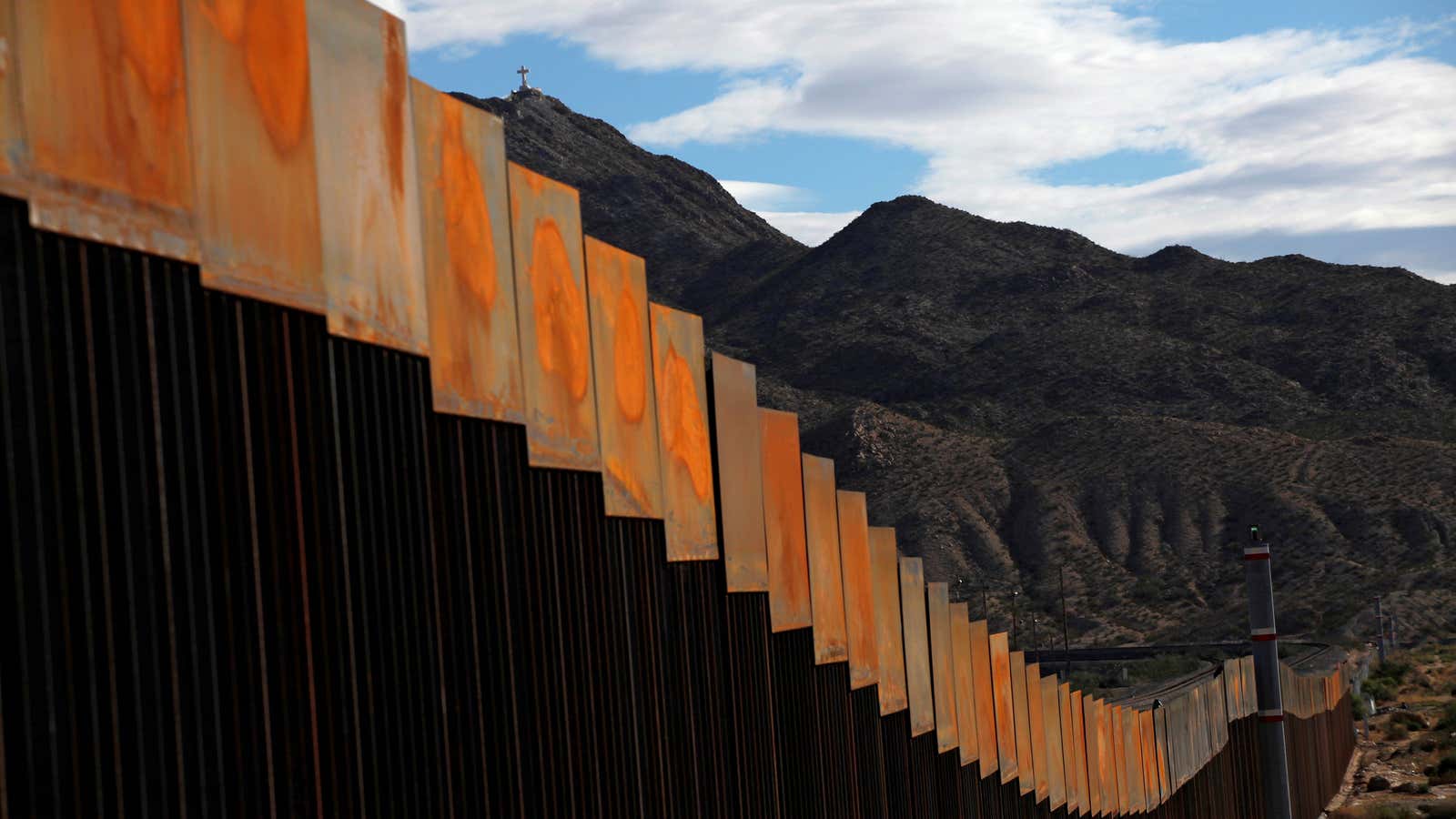“We do not need 2,000 miles of concrete wall from sea to shining sea. We never did, we never proposed that, we never wanted that.” —President Donald J. Trump, January 25, 2019
Of the many slogans that Donald Trump used on the campaign trail, none was more effective than, “Build the wall!” Each time he said it, his conservative supporters whooped and cheered as if Taylor Swift (before she came out as a Democrat) had just walked on stage. But what kind of wall does Trump want—and will he wind up getting a wall, at all?
The answer depends on what, exactly, constitutes a wall.
The thing that separates my bedroom from the outside world can be described as a “wall.” Other things are clearly walls—a brick wall, the Berlin Wall, that big ice wall in Game of Thrones. Yet some things that are wall-like are not actually walls. If a child looked at the fence around a Little League baseball field and referred to it as a “wall,” he would be corrected. “That’s not a wall, silly,” his mother would say. “That’s a fence.”
Of course, walls need not be physical to be real. A couple with deep communication problems can be said to have a wall between them. Some part of a company’s data may be “walled off” to keep it secure.
These examples show us that an essential quality of walls—be they physical or metaphorical—is that they are impermeable. The only way to get past a wall is to make it not a wall, by destroying it or going somewhere where it is not. But that is not easily done. Another characteristic of walls is that they are sturdy and lasting. Walls cannot simply be “taken” down, like fences or gates. They must be “torn” down, as Ronald Reagan once implored Mikhail Gorbachev to do. Tearing down the Berlin Wall required the demise of an entire political system. Tearing down the Game of Thrones wall required an infuriatingly stupid subplot
With these two characteristics of walls in mind—impermeability and sturdiness—let’s turn our attention back to the Trump’s ever-changing “border wall.”
In 2015, Trump said that the wall would be “made of hardened concrete,” adding, “you know, it’s so easy.” Two years later, he’d changed his tune, saying on Fox News, “You know, you think we’re going to build a nice, simple concrete wall, but it’s not that simple.”
One of the issues was, apparently, that one needs to be able to see through to the other side of the wall. US border patrol would want to know if anything was going on over there in Mexico. That makes sense. Trump, for his part, added that it was important for the wall to be “transparent” in order to watch out for flying sacks of illegal drugs: “If you have people on the other side of the wall, you don’t see them—they hit you in the head with 60 pounds of stuff? It’s over.” Ouch.
That consideration had moved Trump to talk of “artistically designed steel slats” rather than a “beautiful wall.” The slats would still constitute a wall, according to our definition. They would be effective at keeping out the thing that is not supposed to permeate them—humans. And they would be sturdy.
Now that Trump’s shutdown gambit failed, even the “beautiful” steel slats are in question. The president wants a wall, but he will be negotiating with Democrats, who refuse to fund one. One Congressional aide told Quartz that Democrats may be open to providing money for a “physical barrier, like a fence.
“A fence is not a wall,” another aide said. Indeed.
It seems unlikely, then, that Trump will get anything resembling an impermeable, sturdy, physical barrier. Still, he could argue that, by making border crossing much more strict and inhumane, he has effectively constructed a metaphorical wall between the US and Mexico—like the one between a non-communicative couple. Something tells me his supporters won’t go for that.
